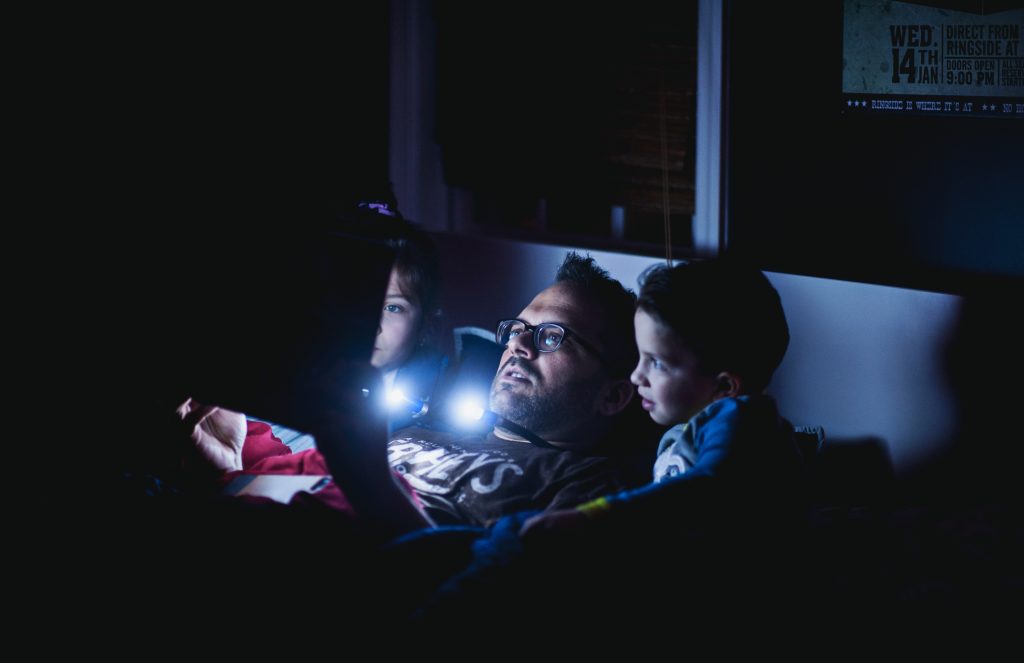

When I was a child, my father used to tell us stories as my siblings and I were getting ready to sleep. He had created a series of stories called “The Adventures of Booroo and Pooroo.” The two main characters, Booroo and Pooroo, would go on many adventures every single day and night. They were both shapeshifters and could change their appearance, size, and form in any way they wanted or needed to during each of the stories. One night they were pirates looking for hidden treasures; the next night they were astronauts going on space missions to save our planet from dangerous alien attacks; other times they were teachers, engineers, mothers, children, toys, trees, ants, pens, anything one can imagine, while doing heroic work to do good in the world.
What was fascinating was that my father would infuse what had happened to us either individually or as a family during the day into these stories. If I’d had a bad day in school, or my classmates, principal, or teachers were not fair or kind, he would make a villain based on those characteristics that Booroo and Pooroo had to confront. If he’d had a bad day at work, he would find a way to implement it into the storyline to summon the help of Booroo and Pooroo to help him solve the issue. Now thinking back on those experiences, I understand that it was a form of instilling life lessons in us and the “incubation process” for him and for us—looking at the issues from various angles and trying to solve the problems while letting the brain analyze, understand, and come up with either acceptance or plausible action plans (Elbow, 1981; Krashen, 2001; Wallas, 1926).
Along with these brain functions, he was also subconsciously helping our first-language acquisition. He had a wide range of interests in different domains of knowledge and would use words and technical terms from various fields throughout the stories. I learned a lot about mathematics, physics, and meteorology (which were all parts of his profession) as well as cooking, sewing, astronomy, mechanics, and electronics, among many other subject areas and essential life skills. Each adventure called for a variety of skills that Booroo and Pooroo needed to develop in order to accomplish the mission at hand successfully, and we the children, as the listeners, needed to know the vocabulary and structures to be able to follow along the adventures with them. It was an organic and continuous supply of language and knowledge that was comprehensible, compelling, rich, and abundant: the criteria for optimal input in first- and second-language acquisition (Ashtari and Krashen, 2020; Krashen and Mason, 2020).
Sometimes if he was too tired, my father would fall asleep in the middle of telling the story. However, because he had ignited the interest and curiosity in the stories, my imagination would go on creating the storylines, events, and dialogues between the characters for as long as I could keep my eyes open before eventually falling asleep. Now, decades later, as I have become an educator myself, I think about the power of those stories in my language acquisition and gaining knowledge bases in different areas in life. In the field of education, we say that one of the main goals of a good educator is to fan the flames of the fire that already exists within each one of our students, so that they can hopefully learn how to protect the fire in all conditions themselves and become autonomous in their own learning. This way we can help our students to become better equipped to create the best versions of their own stories in the pursuit and enhancement of their knowledge, skills, and career options. After all, similar to Booroo and Pooroo, we are all made of stories waiting to be unfolded and told.
References
Ashtari, N. and Krashen, S. (2020). “The Power of ‘Short and Simple Books’: How Mahmoud Hessabi acquired German.” Language Issues Journal, 1(1), 47–53. www.researchgate.net/publication/341477568_The_Power_of_Short_and_Simple_Books_How_Mahmoud_Hessabi_Acquired_German
Elbow, P. (1981). Writing with Power. New York: Oxford University Press.
Krashen, S. (2001). “Incubation: A neglected aspect of the composing process?” ESL Journal, 4(2), 10–11. www.sdkrashen.com/content/articles/incubation.pdf
Krashen, S. and Mason, B. (2020). The “Optimal Input Hypothesis: Not all comprehensible input is of equal value.” CATESOL Newsletter, 1–2. www.researchgate.net/publication/341503469_The_Optimal_Input_Hypothesis_Not_All_Comprehensible_Input_is_of_Equal_Value
Wallas, G. (1926). The Art of Thought: Excerpts Reprinted in Creativity. P. E. Vernon (Ed.). Middlesex, England: Penguin, pp. 91–97.
Nooshan Ashtari could string together a list of words, titles, and places to describe her profession and expertise. However, the truth is that she is still in the middle of writing and reading her own story and shaping her multiple identities as a human, educator, and researcher.







